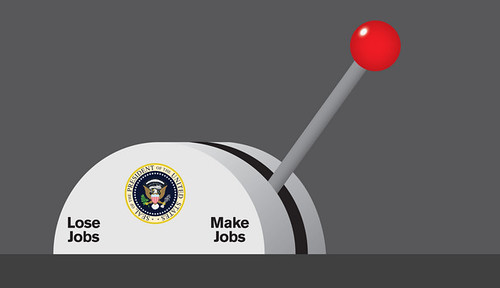You Ask, We Answer: Can the Government Create Jobs?
By
Mattea Kramer
Posted:
|
Budget Process
This week, in honor of high school and college graduations, we’re talking about job creation and employment. There’s much disagreement over the federal government and job creation—that is, if the federal government can, or should, create jobs.
Here’s a simple way of looking at it: The federal government is certainly capable of creating jobs. It can hire construction workers to repair bridges and highways; it can send cash to the states to hire more teachers and police officers; and it can create jobs through more subtle measures, like providing tax cuts to corporations that may use that extra cash to expand hiring. And the federal government itself is a major employer.

Illustration by Amit Werber
The problem is that different economic theories prescribe different roles for the federal government in spurring job creation. And lawmakers of opposing political parties tend to subscribe to conflicting economic theories.
There are two major competing approaches to understanding the proper role of government in job creation. Economists who subscribe to what’s called the “neoclassical tradition,” or related “supply-side” theories, believe the best means to a sound economy is to support the ability of businesses to produce. That’s what supply refers to – businesses supply goods and services that consumers purchase. According to supply-side theory, government should reduce regulations and corporate taxes, thereby putting more money into the hands of businesses to encourage investment and job creation.
A competing school of thought emphasizes demand-side policy – in other words, that federal tax and spending policies should help consumers, who spur the economy by demanding goods and services and putting money into cash registers at businesses they patronize. According to this view, those businesses then hire more workers and produce more goods to meet growing consumer demand. This view suggests the government should respond to a weak economy with policies that help working-class people, including through programs that directly create jobs (or prevent layoffs).
Our new book A People’s Guide to the Federal Budget has lots more about how the federal government affects the economy. Check it out, and tell us what you think.